Beta-Carotin: Das Provitamin-A-Kraftpaket der Natur – Versorgung, Wissenschaft und höchste Qualität
1. Was ist Beta-Carotin?
Beta-Carotin (β-Carotin) ist ein leuchtendes Rot-Orange Provitamin A Carotinoid, vorwiegend in Pflanzen und Mikroorganismen vorhanden. Es ist im Wesentlichen der stärkste Vorläufer von Retinol (Vitamin A) im menschlichen Körper. Chemisch kategorisiert als Tetraterpenoid, seine Struktur besteht aus zwei Retinylgruppen, die durch eine Polyenkette verbunden sind, die für seine färbenden und antioxidativen Eigenschaften verantwortlich ist. Im Gegensatz zu vorgebildetem Vitamin A (Retinol, Retinal, Retinsäure) wird Beta-Carotin in aktives Vitamin A umgewandelt nur nach Bedarf durch den Körper, wodurch das Risiko einer Hypervitaminose A-Toxizität erheblich verringert wird. Seine Hauptaufgaben umfassen die Funktion als essentielle Nahrungszufuhr von Vitamin A und erscheint als starkes fettlösliches Antioxidans, wodurch gefährliche freie Radikale und reaktive Sauerstoffspezies (ROS) neutralisiert werden.
2. Produktversorgung, chemische Eigenschaften und Schlüsselkennungen
-
Wichtigste natürliche Quellen: Reichlich in orangefarbenen und gelben Früchten und Gemüse (Karotten, Süßkartoffeln, Kürbisse, Mangos, Aprikosen), dunklem Blattgemüse (Spinat, Grünkohl), rotem Palmöl und bestimmten Algen (z. B. Dunaliella salina).
-
Chemische Eigenschaften:
-
Molekulare Komponenten: C₄₀H₅₆
-
Molekulargewicht (MW): 536,87 g/mol
-
Sehen: Tiefrot-oranges bis violettes kristallines Pulver oder Lösung.
-
Löslichkeit: Hervorragende Löslichkeit in natürlichen Lösungsmitteln (Chloroform, Benzol), kaum Löslichkeit in Fetten und Ölen, praktisch unlöslich in Wasser. Die Löslichkeit kann durch Formulierung (Emulsionen, Mizellen) verbessert werden.
-
Stabilität: Empfindlich gegenüber Licht, Wärme und Oxidation. Erfordert Schutz (Antioxidantien, inerte Umgebung, undurchsichtige Verpackung).
-
-
Schlüsselkennungen:
-
CAS-Registrierungsmenge: 7235-40-7
-
EG-Menge (EINECS): 230-636-6
-
3. Hochwertiges Beta-Carotin erkennen: Wichtige Eigenschaften
Um das „beste“ Beta-Carotin auszuwählen, müssen eine Reihe wichtiger Komponenten genau geprüft werden:
-
Versorgung & Reinheit: Gehen Sie für rein, pflanzlich Quellen (wie Dunaliella salina oder Ringelblumenextrakte) gegenüber künstlichen Varianten für eine bessere Bioverfügbarkeit und bessere Auswahl für den Käufer. Reinheit ist oberstes Gebot. Achten Sie auf eine HPLC-geprüfte Reinheit von über 96%, idealerweise >99%. Verunreinigungen können die Wirksamkeit verringern und Sicherheitsrisiken darstellen.
-
Zusammensetzung: Geben Sie die Isomerieprofil. Alle-trans Beta-Carotin ist der erste energetische Typ, jedoch einige cis-Isomere kommen in der Natur vor und haben eine völlig unterschiedliche Bioverfügbarkeit.
-
Wirksamkeit und Bioverfügbarkeit: Stellen Sie sicher, dass das Produkt hohe Biokonversionseffizienz zu Retinol. Formulierungen mit Emulsionstechnologien (z. B. Beadlets, Nanoemulsionen) verbessern die Aufnahme im Darm erheblich. Stabilitätsprüfung unter entsprechenden Bedingungen (Wärme, Licht, pH-Wert) ist wichtig.
-
Einhaltung: Sollte strenge weltweiten Arzneibuchanforderungen (USP, EP, JP) und verwandte Lebensmittel-/Zusatzstoffgesetze (FDA GRAS, EU Novel Meals, JECFA). Strenge Schadstoffmanagement (Schwermetalle, Pestizide, Lösungsmittel, Mikroben) ist nicht verhandelbar.
-
Herkunft & Herstellung: Rückverfolgbarkeit zu anerkannten Quellen und GMP-zertifizierte Produktionsanlagen sind Indikatoren für hohe Qualität und Sicherheit. Nachhaltige Beschaffungspraktiken steigern den Wert.
-
Vorteile und Mechanismus für das Wohlbefinden:
-
Provitamin A-Übung: Wichtig für das Sehen (Rhodopsinsynthese), die Immunfunktion (Lymphozytendifferenzierung), das Zellwachstum/die Zelldifferenzierung und die Reproduktion.
-
Starkes Antioxidans: Löscht Singulett-Sauerstoff und fängt freie Radikale ab, schützt Lipide, Proteine und DNA vor oxidativen Schäden, was mit einem geringeren Risiko chronischer Krankheiten (bestimmte Krebsarten, Herzerkrankungen, altersbedingte Makuladegeneration) in Verbindung gebracht wird.
-
Hautgesundheit: Trägt zur Hautpigmentierung bei (sanfter natürlicher Sonnenschutz), unterstützt die Funktion der Hautbarriere und bekämpft durch antioxidative Wirkung die Lichtalterung.
-
Immunmodulation: Verbessert zellvermittelte Immunreaktionen und die Antikörperproduktion.
-
-
Tägliche Einnahme und Dosierung:
-
Für Beta-Carotin selbst gibt es keine einheitliche empfohlene Tagesdosis. Der Bedarf wird wie folgt ausgedrückt: Retinol-Übungsäquivalente (RAE).
-
1 µg RAE = 12 µg Beta-Carotin aus der Nahrung (aus Mahlzeiten) oder 2 µg Beta-Carotin als Nahrungsergänzungsmittel (aufgrund von Formulierungsvariationen).
-
Ausreichende Zufuhr (AI) für Vitamin A (Erwachsene): 700–900 mcg RAE/Tag für Männer, 600–700 mcg RAE/Tag für Frauen.
-
Typische Komplementdosen: Variieren Sie zwischen 3 mg und 15 mg pro Tag. Eine hochdosierte Supplementierung (>20 mg/Tag) sollte ärztlich überwacht werden, insbesondere bei Rauchern. Kümmern Sie sich zuerst um die Nahrungsquellen.
-
-
Verwendung: Integriert in Softgels, Tabletten, Kapseln, gesunde Mahlzeiten, Getränke, Kosmetik (Lotionen, Seren). Beachten Sie die jeweilige Produktkennzeichnung.
-
Torzuschauer: Menschen mit eingeschränkter Vitamin-A-Aufnahme über die Nahrung, Menschen auf der Suche nach antioxidativer Unterstützung, zur Unterstützung der Hautgesundheit, bestimmte wissenschaftliche Bevölkerungsgruppen unter Aufsicht.
-
Vorsichtsmaßnahmen und Nebenwirkungen:
-
In der Regel bei sinnvollen Dosierungen gut verträglich.
-
Überdosierungen (>30 mg/Tag): Kann verursachen harmlose, jedoch reversible Carotenodermie (gelb-orange Hautverfärbung, insbesondere an Handflächen/Fußsohlen).
-
Menschen, die rauchen: Einige große Forschungsprojekte (ATBC, CARET) verknüpften hochdosiertes künstliches Beta-Carotin Nahrungsergänzungsmittel erhöhen das Lungenkrebsrisiko bei starken Rauchern/Alkoholkonsumenten. Natürliches Beta-Carotin aus Nahrungsmitteln/Nahrungsergänzungsmitteln in üblichen Dosen steht NICHT mit dieser Gefahr in Zusammenhang. Raucher sollten hochdosierte isolierte Nahrungsergänzungsmittel meiden, sofern nichts anderes empfohlen wird.
-
Schwangerschaft/Stillzeit: Sicher vor Nahrungsmitteln, hochdosierte Nahrungsergänzungsmittel nur unter ärztlicher Aufsicht.
-
Interaktionen: Orlistat, Gallensäurebinder (Cholestyramin, Colestipol) und Mineralöl können die Absorption verringern.
-
-
Kontraindikationen: Überempfindlichkeit. Bei Patienten mit Hypercarotinämie oder schwerer Leber-/Nierenerkrankung ist Vorsicht geboten.
4. Shaanxi Zhonghong Investment Technology Co., Ltd.: Ihr vertrauenswürdiger Beta-Carotin-Partner
Shaanxi Zhonghong Investment Technology Co., Ltd. steht als Premier vertikal integriertes High-Tech-Unternehmen Innovation in den Bereichen Chemie, Verbrauchsmaterialien und Biowissenschaften. Mit 28 Jahre Facherfahrung im Bereich bioaktiver Verbindungen, wir zeichnen uns aus in der Extraktion, Isolierung, Reinigung und Verbesserung der Nutzbarkeit potenter Pflanzenbestandteile.
-
Kernkompetenzen: Natürliche Pflanzenextrakte, Schönheitswirkstoffe, Pharmazeutische und nutrazeutische Komponenten, Natürliche Pigmente, Nahrungsergänzungsmittel, Mahlzeiten- und Getränkekomponenten, Natürliche Süßstoffe.
-
Wissenschaftliche Fähigkeiten (F&E-Einschränkungen):
-
Gemeinsame Innovation: Strategische Partnerschaften mit 5 Hauptuniversitäten durch spezielle gemeinsame Labore.
-
IP-Portfolio: Besitz von Über 20 geschützte Patente, wodurch überlegene Extraktions- und Reinigungsmethoden gewährleistet werden.
-
Einzigartige Verbindungsbibliothek: Ein weltweit einzigartiges Repository, das neuartige Entdeckungen und Anpassungen ermöglicht.
-
-
Hochmoderne Infrastruktur:
-
Überlegene Analytik: Ausgestattet mit HPLC (Hochleistungsflüssigkeitschromatographie), UHPLC (Extrem-HPLC), Und NMR-Spektrometrie (Kernspinresonanzspektroskopie) für eine beispiellose strukturelle Bestätigung und Reinheitsüberprüfung.
-
Überlegene Reinheit: Unsere strengen Protokolle liefern ständig Beta-Carotin mit Reinheitsanforderungen übersteigen den Branchendurchschnitt um über 20%.
-
-
Globale Lieferkette: Robuste Vertriebsgemeinschaft Über 80 internationale Standorte in ganz Asien, Europa und Amerika und bietet maßgeschneiderte Zutatenoptionen an multinationale Pharmaunternehmen, Forschungseinrichtungen und große FMCG-Hersteller.
Beta-Carotin: Freisetzung nachgewiesener gesundheitlicher Vorteile
-
Vision-Hilfe: Grundlegend für die Netzhautfunktion und das Sehen bei schwachem Licht.
-
Stärkung des Immunsystems: Wichtig für die Aufrechterhaltung der Schleimhautgrenzen und der Funktion der Immunzellen.
-
Starker antioxidativer Schutz: Schützt das Zellgewebe vor oxidativem Stress, einem Hauptfaktor für Alterung und chronische Erkrankungen.
-
Vitalität und Schutz der Haut: Fördert eine gesunde Hauterneuerung, bietet einen leichten UV-Schutz (in Kombination mit Sonnenschutzmitteln) und bekämpft oxidative Hautschäden.
-
Mobile Gesundheit und Kommunikation: Unterstützt das normale Zellwachstum, die Differenzierung und die Genregulation.
Vollständige Produktspezifikation und Bewertungszertifikate (COA)
| Schadstoffklasse | Parameter | Spezifikation einschränken | Schauen Sie sich die Technik an (Referenz) |
|---|---|---|---|
| Pestizide | |||
| Acephat | ≤ 0,01 mg/kg | GB 23200.113-2018 / EU SANTE/11320/2019 | |
| Chlorpyrifos | ≤ 0,01 mg/kg | GB 23200.113-2018 / EU SANTE/11320/2019 | |
| Cypermethrin | ≤ 0,05 mg/kg | GB 23200.113-2018 / EU SANTE/11320/2019 | |
| Dichlorvos | ≤ 0,01 mg/kg | GB 23200.113-2018 / EU SANTE/11320/2019 | |
| Ganze DDTs | ≤ 0,05 mg/kg | GB 23200.113-2018 / EU SANTE/11320/2019 | |
| SCHWERMETALLE | |||
| Blei (Pb) | ≤ 2,0 mg/kg | ICP-MS (USP <232>/EP 2.4.8) | |
| Arsen (As) | ≤ 1,0 mg/kg | ICP-MS (USP <232>/EP 2.4.8) | |
| Cadmium (Cd) | ≤ 0,5 mg/kg | ICP-MS (USP <232>/EP 2.4.8) | |
| Quecksilber (Hg) | ≤ 0,1 mg/kg | ICP-MS / AAS (USP <232>/EP 2.4.8) | |
| MIKROBIOLOGIE | |||
| Ganze Platte hängt ab | ≤ 10.000 KBE/g | USP <61>/EP 2.6.12 | |
| Hefe und Mehltau | ≤ 500 KBE/g | USP <61>/EP 2.6.12 | |
| Escherichia coli | Fehlt in 1 g | USP <62>/EP 2.6.13 | |
| Salmonellen spp. | Fehlt in 10 g | USP <62>/EP 2.6.13 | |
| Staphylococcus aureus | Fehlt in 1 g | USP <62>/EP 2.6.13 | |
| Pseudomonas aeruginosa | Fehlt in 1 g | USP <62>/EP 2.6.13 |
Hinweis: Die Angaben sind Richtwerte und basieren auf typischen Lebensmittel-/Pharmaqualitätsstandards. Pro Charge wird ein genaues COA bereitgestellt.
Überlegener Fertigungs-Workflow
Zhonghongs Beta-Carotin-Produktion nutzt firmeneigenes Extraktions- und Reinigungs-Know-how:
-
Beschaffung und Vorbehandlung: Anzahl der Prämien Dunaliella salina Biomasse oder Pflanzenmaterialien. Mahlen, Trocknen.
-
Überkritische Fluidextraktion (SFE) / Lösungsmittelextraktion: Nutzt lebensmittelechte Lösungsmittel oder überkritisches CO₂ zur effizienten, selektiven Isolierung von Carotinoiden unter kontrollierter Temperatur/Stress.
-
Fokus: Entfernen des Lösungsmittels im Vakuum.
-
Mehrstufige chromatographische Reinigung: Präparative HPLC oder Adsorptionschromatographie erreicht eine ultrahohe Reinheit (>99%) und beseitigt Isomere, Xanthophylle und Lösungsmittelrückstände.
-
Kristallisation: Kontrollierte Kristallisation zum Erreichen der gewünschten Kristallform und Partikelgrößenverteilung.
-
Stabilisierung und Formulierung (nicht obligatorisch): Umwandlung in Ölsuspensionen, wasserdispergierbare Pulver (Beadlets) oder Emulsionen unter Verwendung Kapselungsmatrizen (Gelatine, Stärke, Akaziengummi) und antioxidative Methoden (Tocopherole, Ascorbylpalmitat).
-
Trocknen: Sprühtrocknung oder Gefriertrocknung für pulverförmige Sorten.
-
Strenges Qualitätsmanagement (QC): Rigoros HPLC/UHPLC-Test, Schwerstahlbewertung (ICP-MS), Pestizidrückstandsscreening (GC-MS/MS, LC-MS/MS), mikrobiologische Tests, Restlösungsmittelbestimmung (GC), Und physikochemische Untersuchungen (Trocknungsverlust, Löslichkeit, Partikelgröße) garantieren die Einhaltung.
Strenges Qualitätsmanagementprotokoll
In Zhonghong, Hohe Qualität durch Design (QbD) Ideen liegen unserer Beta-Carotin-Herstellung zugrunde. Unsere ISO 17025 akkreditiertes Labor implementiert eine mehrstufige QC-Technik:
-
Qualifikation für Rohmaterialien: Strenge Prüfung der eingehenden Biomasse/Lösungsmittel auf vordefinierte Spezifikationen.
-
Kontrollen im Verlauf (IPC): Wichtige Parameter (Lösungsmittelverhältnisse, Temperatur, Druck, Durchflussraten, Reinheitskontrollpunkte) werden während der Extraktion und Reinigung überwacht durch PAT (Kurs für analytische Expertise) Instrumente wie Inline-Spektrophotometrie.
-
Ultimativer Produkteinführungstest: Jede Charge wird einer vollständigen Arzneibuchprüfung unterzogen. USP-NF <601> Carotinoide Und EP-Monographien, zusammen mit:
-
Ausweis: FTIR, UV-Vis-Spektrophotometrie, HPLC-Retentionszeitübereinstimmung.
-
Analyse und Reinheit: HPLC/UHPLC quantifiziert alle-trans Beta-Carotin und verwandte Substanzen/Isomere gemäß den USP/EP-Referenzanforderungen. Die Reinheit übersteigt normalerweise 99,0%.
-
Verunreinigungen: ICP-MS für Schwermetalle (Pb, As, Cd, Hg), GC-MS/MS und LC-MS/MS für Pestizidrückstände, die den strengen EU-RHG-Werten entsprechen, LAL werfen Sie einen Blick auf für Endotoxine (falls relevant), vollständige mikrobiologische Zählung und Pathogentests.
-
Physikalisch-chemische Eigenschaften: Trocknungsverlust, Glührückstand, Löslichkeit, Partikelgrößenbestimmung (Laserbeugung), spezifische optische Drehung.
-
-
Stabilitätsforschung: Echtzeit und beschleunigt ICH Q1A(R2) konforme Stabilitätspakete zur Feststellung der Haltbarkeit und der Lagerbedingungen.
-
Dokumentation und Rückverfolgbarkeit: Voll GMP-Dokumentation, digitale Chargeninformationen (EBR)und vervollständigen Echtheitszertifikat für eine vollständige Rückverfolgbarkeit vom Rohmaterial bis zum fertigen Produkt.
Verpackung & Weltlogistik
-
Hauptverpackung: Gepäck aus mehrschichtiger Aluminiumfolie mit Innenfutter aus Polyethylen (5kg, 10kg, 25kg Gewebe) darunter Stickstoffspülung um die Oxidation zu stoppen. Zusätzlich erhältlich in HDPE-Fässer mit doppelter LDPE-Auskleidung für größere Portionen.
-
Sekundärverpackung: Robust Kartons aus Faserplatten.
-
Lagerung: Einzelhändler unter 25 °C (77 °F) in einem kühl und trocken lagern. Vor Licht, Feuchtigkeit und Sauerstoff schützen. Bewahren Sie die versiegelte Verpackung bis zur Verwendung auf.
-
Haltbarkeit: 24 Monate ab Herstellungsdatum bei sachgemäßer Lagerung in ungeöffneter Originalverpackung.
-
Logistik: Weltweiter Transport per Luftfracht, Seefracht (FCL/LCL) oder speziellem Kurierdienst. Konform mit IATA/IMDG-Gesetze. Auswahl an Kühlketten zugänglich für empfindliche Formulierungen.
Gesundheitsmechanismen, Innovation und Forschungsgrenzen
-
Bewegungsmechanismus: Enzymatische Spaltung durch BCO1 (Beta-Carotin-Oxygenase 1) im Darm entsteht Retinaldehyd, das zu Retinol reduziert wird. Die antioxidative Wirkung erfolgt durch Elektronenschalter Und Radikaladduktbildung, Löschung von Singulett-Sauerstoff (
¹O₂) und Peroxylradikale (ROO•). Moduliert Nrf2/ARE-Signalweg Induktion endogener antioxidativer Enzyme. -
Industrielle Funktionen:
-
Nutrazeutika: Vitamin-A-Nahrungsergänzungsmittel, Antioxidantienmischungen, Formel zur Unterstützung des Immunsystems.
-
Mahlzeiten und Getränke: Natürlicher Farbstoff (E160a), Anreicherung in Milchprodukten, Säften, Backwaren, Süßwaren.
-
Kosmetika: Anti-Aging-Lotionen, Seren, Sonnenschutzprodukte (mit antioxidativer Wirkung), Lippenstifte.
-
Tierfutter: Geflügelfutter zur Dotterpigmentierung, Aquakultur zur Fleischfärbung.
-
-
Zhonghongs Verbesserungen:
-
Formulierungen mit verbesserter Bioverfügbarkeit: Proprietär Nanoemulsionen Und selbstmikroemulgierende Arzneimittelzufuhrmethoden (SMEDDS).
-
Stabilisierung Angewandte Wissenschaften: Vorgesetzter Kapselungsmatrizen Und synergistische Antioxidantienmischungen.
-
Nachhaltige Gewinnung: Optimierung von SFE-CO₂ für weniger Lösungsmittelabfall und Energieverbrauch.
-
-
Grenzen und Herausforderungen der Analyse:
-
Personalisierte Diät: Verständnis genetischer Polymorphismen (z. B. BCO1) die Konvertierungseffektivität beeinflussen.
-
Krankheitsvorbeugung: Klärung der Rolle bei der Chemoprävention von Krebs, der kardiovaskulären Gesundheit und dem kognitiven Abbau über die Korrektur primärer Defizite hinaus. Dosis-Wirkungs-Beziehungen Und Wechselwirkungen mit verschiedenen Mikronährstoffen (Vitamin E, Selen) sind essentiell.
-
Bioverfügbarkeitstechnik: Entwicklung von Verabreichungssystemen der nächsten Generation für maximale Aufnahme und Gewebefokussierung.
-
Künstliche Biologie: Entwicklung von Mikroben für eine nachhaltige, ertragreiche Beta-Carotin-Herstellung.
-
Häufig gestellte Fragen (FAQ)
-
F: Ist Ihr Beta-Carotin synthetisch oder natürlich?
-
A: Wir konzentrieren uns auf hochreines reines Beta-Carotin, hauptsächlich gewonnen aus Dunaliella salina Algen- oder Pflanzenquellen unter Verwendung überlegener Strategien.
-
-
F: Welchen Reinheitsgrad garantieren Sie?
-
A: Unsere üblichen Beta-Carotin-Kristalle übersteigen in der Regel 99,0% Reinheit (HPLC-Test, all-trans), deutlich über Branchennormen. Kundenspezifische Reinheiten erhältlich.
-
-
F: Liefern Sie wasserlösliche Sorten?
-
A: Klar, wir produzieren Kaltwasserdispergierbare Beadlet-Formulierungen unter Verwendung von Stärke- oder Gelatinematrizen, ideal geeignet für Getränke und Instantprodukte. Auch Nanoemulsionen sind erhältlich.
-
-
F: Sind Ihre Waren für Veganer/Vegetarier geeignet?
-
A: Unser reines Beta-Carotin aus Algen ist von Natur aus vegan. Beadlet-Formulierungen können maßgeschneidert vegan sein (unter Verwendung pflanzlicher Träger).
-
-
F: Welche Zertifizierungen besitzen Sie?
-
A: Wir funktionieren unter ISO 9001, ISO 22000, FSSC 22000, GMP (für verwandte Qualitäten)und pflegen Koscher, Halal und natürlich Zertifizierungen für bestimmte Waren. Dokumentation auf Anfrage erhältlich.
-
-
F: Können Sie kundenspezifische Formulierungen oder Spezifikationen anbieten?
-
A: Vollständig. Anpassung ist eine Kernkompetenz. Wir passen Konzentration, Partikelgröße, Löslichkeitsprofil, Trägeröle und Stabilisierungsmethoden individuell an, um spezielle Anwendungsanforderungen zu erfüllen.
-
-
F: Was ist die Mindestbestellmenge (MOQ)?
-
A: Die Mindestbestellmenge variiert je nach Qualität und Zusammensetzung. Kontaktieren Sie uns für weitere Informationen. Musterabschnitte zur Analyse gefunden werden.
-
-
F: Ist Beta-Carotin für Raucher unbedenklich?
-
A: Überdosis künstlich In speziellen Studien wurde die Einnahme von Beta-Carotin-Nahrungsergänzungsmitteln (normalerweise > 20 mg/Tag) mit einem erhöhten Lungenkrebsrisiko bei starken Rauchern in Verbindung gebracht. Natürliches Beta-Carotin aus Lebensmitteln oder Nahrungsergänzungsmitteln in typischen Nahrungsmengen (3–15 mg/Tag) gilt als sicher. Raucher sollten vor der Einnahme hochdosierter Nahrungsergänzungsmittel einen Arzt konsultieren.
-
Beschaffung & Muster: Erleben Sie den Zhonghong-Unterschied
Liefern Sie hochwertiges, hochreines Beta-Carotin direkt vom Hersteller. Shaanxi Zhonghong Investment Technology Co., Ltd. gewährleistet vertikal verwaltete hohe Qualität, progressive Formulierungen, Und zuverlässige Weltversorgung.
-
Fordern Sie ein Angebot oder eine technische Datei an: Kontaktieren Sie unser Vertriebsteam.
-
Kostenlose Proben erhalten: Überzeugen Sie sich selbst von unserer hohen Qualität. Begrenzte Portionen für zertifizierte Verbraucher erhältlich.
-
Kontaktinformationen:
-
E-Mail: liaodaohai@gmail.com
-
Website: https://www.aiherba.com (Das vollständige Produktportfolio und die Firmendetails finden Sie unter)
-
Abschluss
Beta-Carotin bleibt ein unverzichtbares Provitamin A-Nährstoff und ein essentielles endogenes Antioxidans. Die Entscheidung für ein qualitativ hochwertiges Angebot ist für die Wirksamkeit und Sicherheit von entscheidender Bedeutung. Shaanxi Zhonghong Investment Technology Co., Ltd., mit seinen 28-jähriges Erbe, modernste Forschung und Entwicklung, strenge GMP-Herstellung und weltweite Reichweite, liefert hochwertiges reines Beta-Carotin maßgeschneidert auf die hohen Anforderungen der Nutraceutical-, Lebensmittel-, Getränke-, Kosmetik- und Pharmaindustrie. Unser Engagement für Reinheit, Verbesserung der Bioverfügbarkeit und Einhaltung gesetzlicher Vorschriften macht uns zum Partner der Wahl für hochwertige pflanzliche Inhaltsstoffe.
Referenzen (Illustrativ – Präzise Formulierungen erfordern besondere Zitate)
-
Weltgesundheitsorganisation (WHO). Vitamin- und Mineralstoffbedarf in der menschlichen Ernährung. 2. Auflage 2004.
-
Institute of Medicine (USA) Gremium für diätetische Antioxidantien und damit verbundene Verbindungen. Referenzmengen für die Zufuhr von Vitamin C, Vitamin E, Selen und Carotinoiden. Nationwide Academies Press; 2000.
-
Grune, T., et al. (2010). Beta-Carotin ist für den Menschen eine lebenswichtige Vitamin-A-Quelle. Das Journal der Diät, 140(12), 2268S–2285S.
-
Erdman Jr, JW, et al. (2009). Hängen die gesundheitlichen Eigenschaften von Lycopin mit seiner antioxidativen Funktion zusammen? Archiv für Biochemie und Biophysik, 483(2), 229-235. (Bespricht typischerweise Carotinoidmechanismen).
-
Bohn, T., et al. (2017). Mechanistische Aspekte der Carotinoid-Bioverfügbarkeit. Biochimica et Biophysica Acta (BBA) – Molekular- und Zellbiologie der Lipide, 1862(10), 1169-1179.
-
US Pharmacopeia Nationwide Formulary (USP-NF). Grundlegendes Kapitel <601> Carotinoide.
-
Europäisches Arzneibuch (Ph. Eur.) Monographie 01/2008:0776 (Beta-Carotin).
-
Codex Alimentarius – Grundnorm für Lebensmittelbestandteile (GSFA).
-
EFSA-Gremium für diätetische Produkte, Ernährung und Allergien (NDA). (2012). Wissenschaftliches Gutachten zur Untermauerung gesundheitsbezogener Angaben zu Beta-Carotin und zur Erhaltung gesunder Haut und Schleimhäute (ID 4236) gemäß Artikel 13 Absatz 1 der Verordnung (EG) Nr. 1924/2006. EFSA-Journal, 10(12), 2983.
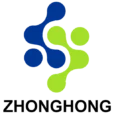
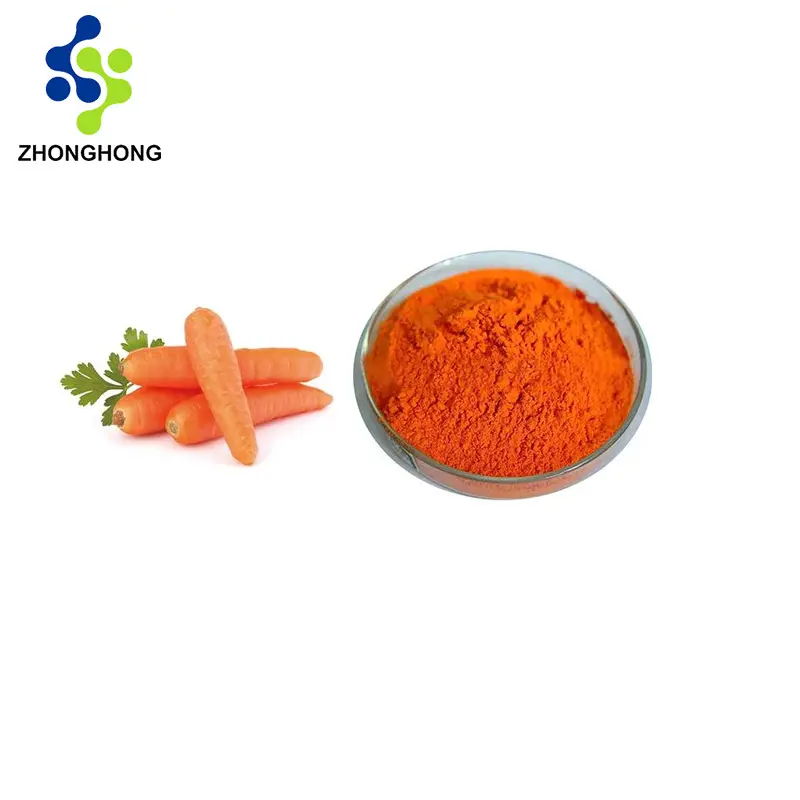
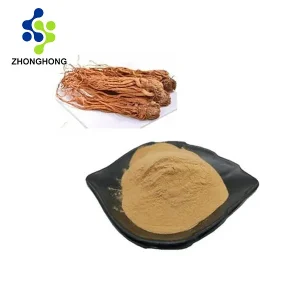
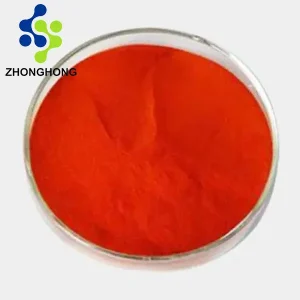

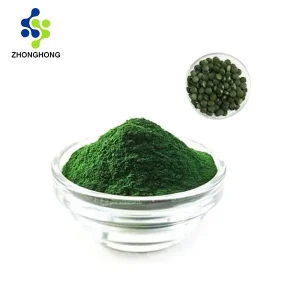
评价
目前还没有评价